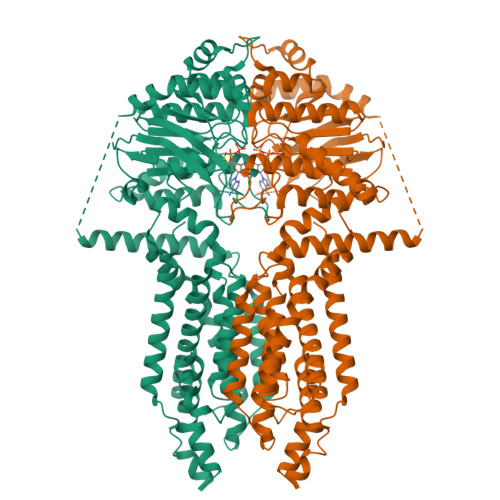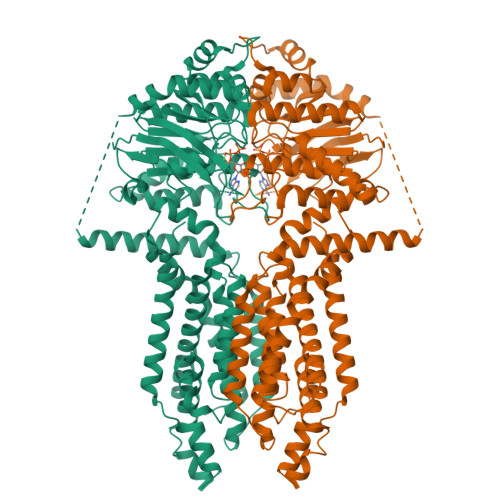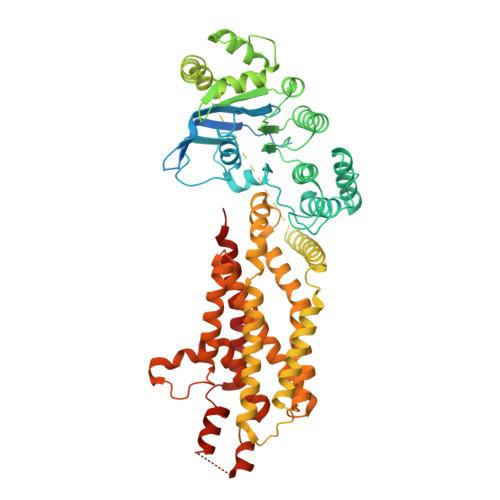Structural insights into AtABCG25, an angiosperm-specific abscisic acid exporter.
Xin, J., Zhou, Y., Qiu, Y., Geng, H., Wang, Y., Song, Y., Liang, J., Yan, K.(2024) Plant Commun 5: 100776-100776
- PubMed: 38050355
- DOI: https://doi.org/10.1016/j.xplc.2023.100776
- Primary Citation of Related Structures:
8WAM, 8WBA, 8WBX, 8WD6 - PubMed Abstract:
Cellular hormone homeostasis is essential for precise spatial and temporal signaling responses and plant fitness. Abscisic acid (ABA) plays pivotal roles in orchestrating various developmental and stress responses and confers fitness benefits over ecological and evolutionary timescales in terrestrial plants. Cellular ABA level is regulated by complex processes, including biosynthesis, catabolism, and transport. AtABCG25 is the first ABA exporter identified through genetic screening and affects diverse ABA responses. Resolving the structural basis of ABA export by ABCG25 is critical for further manipulations of ABA homeostasis and plant fitness. We used cryo-electron microscopy to elucidate the structural dynamics of AtABCG25 and successfully characterized different states, including apo AtABCG25, ABA-bound AtABCG25, and ATP-bound AtABCG25 (E232Q). Notably, AtABCG25 forms a homodimer that features a deep, slit-like cavity in the transmembrane domain, and we precisely characterized the critical residues in the cavity where ABA binds. ATP binding triggers closure of the nucleotide-binding domains and conformational transitions in the transmembrane domains. We show that AtABCG25 belongs to a conserved ABCG subfamily that originated during the evolution of angiosperms. This subfamily neofunctionalized to regulate seed germination via the endosperm, in concert with the evolution of this angiosperm-specific, embryo-nourishing tissue. Collectively, these findings provide valuable insights into the intricate substrate recognition and transport mechanisms of the ABA exporter AtABCG25, paving the way for genetic manipulation of ABA homeostasis and plant fitness.
Organizational Affiliation:
Department of Chemical Biology, School of Life Sciences, Southern University of Science and Technology, Shenzhen 518055, China.




















